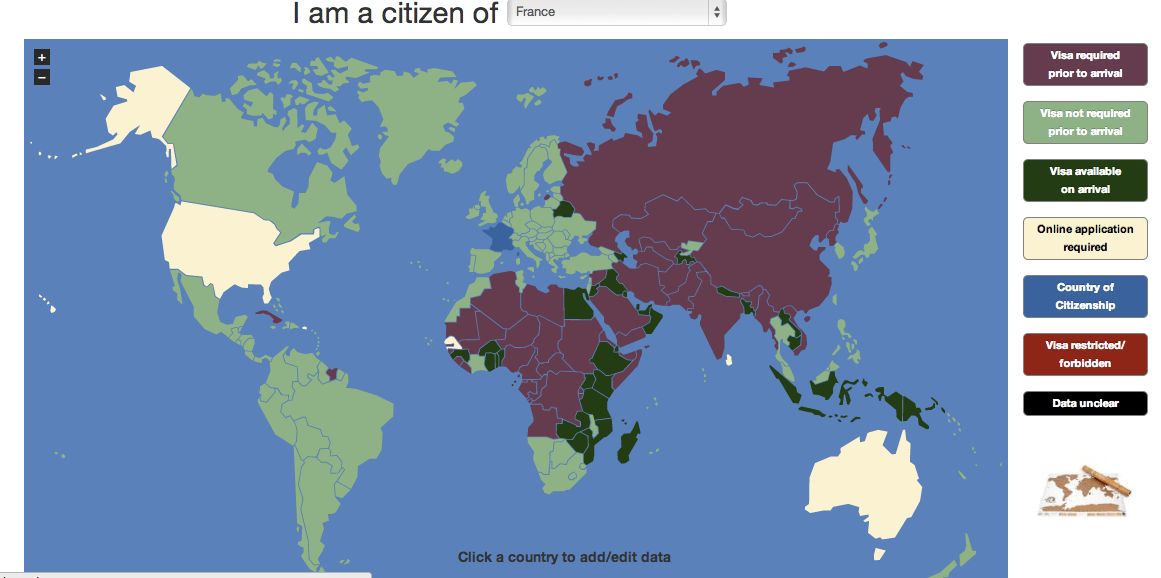For some people, the first they think of a visa is when they arrive at the airline check in and are asked if they have a visa for their destination. That’s the last place you want to be working that out because in many cases: no visa, no arrival.
I was on a bus in South America when one passenger, found to his horror he would need a visa to enter the next country. He protested: I am a US citizen -why do I need a visa?
A visa is a document or mark showing that a non citizen is allowed to be in the country they are visiting whether it is as a short term, long term or transit visit. It usually takes the form of a stamp or form in your passport.
Some key points:
- Visa comes from the Latin: “charta visa”, literally. “paper that has been seen”
- It is your responsibility to have the correct visa-not the travel agent, airline or tour operator
- Some countries issue visas in advance and some at entry point
- For some countries, you can apply for a visa online, others require you to apply in person at an embassy or consulate and some do it by mail
- Some countries may ask visitors to present return tickets and evidence of money to cover intended stay.
- A visa does not guarantee entry. That still remains the right of the immigration agent at the country’s entry point. Some countries may refuse entry to visitors who do not comply with requirements such as appearance. Sometimes the agent may be angling for a bribe. I found at Dammam airport in Saudi Arabia, Westerners holding visitor visas were processed last because “it took more work“.
- Be aware that if you have the visas of some countries in your passport, you may be refused entry into others but there are work arounds for this! Will blog about this next week
- Check your visa details are correct when you get the visa. Date of birth can be easily confused on the countries which operate the month and day in reverse. Surname can be entered in your first name or vice versa
Knowing which countries you need a visa for, can be very frustrating. Searching embassy websites (which can be put of date), asking travel agents (who have been wrong) and reading travel forums and blogs all take time. Project Visa attempts to provide up to date visa information for all countries. Where possible, they give a list of all embassies for the country. Visa mapper (see above) gives visa information in a visual form. The information is added in the same way as Wikipedia with users updating the information.
Finally, there are companies that specialise in getting you a visa. They can be useful in a hurry, because they know the arrangements and have embassy contacts.
Legitimate operators include
- Australia’s Visalink
- Canada’s Visa Services Canada
- New Zealand: Travcour
- UK based Vfs global
- USA‘s Visa HQ
I make no guarantee of these company’s services but I do know they are used by Embassies and consulates around the world. Whether you end up using their visa sourcing service, they do have excellent information as to who requires a visa for where, saving valuable time.
When travelling, check the legitimacy of the agent trying to organise a visa for your next destination. There are stories of tourists getting a visa in India, Vietnam and Cambodia for ten times the cost. (But then again, getting across the border with a visa in your passport may be worth ten times the hassle of getting one at the border).




Ah, yes… because he’s a US citizen is the reason why he needs a visa. Most of S. America does this to Americans as a reciprocity fee.
Dumb Americanos 😛
Ha, ha, ha…….”I am a US citizen -why do I need a visa?” so funny & so typical!
Interesting! I don’t do a ton of international travel so I haven’t had a lot of experience with this.
When I was younger, I was a Mormon missionary in the Dominican Republic for 2 years. Because it was such a hassle to get visas, what we would typically do was get 90 day “tourist” visas, and then at the end of the 2 years we had to pay a fine because “Oops we overstayed our 90 days” (from what I remember it was very small – along the line of $10-20.
This was 20 years ago, and while I was there they changed the policies and the new missionaries all came with visas that were good for the whole 2 years.